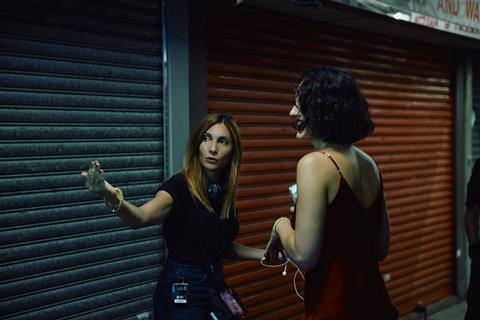
Women directed or co-directed just 27.1% of French films in 2023, down from a historic high of 33.2% in 2022, according to the CNC’s Gender Equality report published this month.
Women directors made 64 films in 2023, compared to 69 in 2022. This is triple the 33 films directed by women in 2003.
This compares to the 172 films directed by men in 2023, up 23.7% from 139 in 2022. Female directors accounted for just 26.7% of fiction features, down 7.3% from 2022, and 33.3% of documentaries, a slight rise from 2022’s 30.2%, but down from 2021 near-parity 47.7%.
There was a drop in the proportion of women directing or co-directing first films after a record 55% in 2021 with 34.2% of first films directed or co-directed by women in 2023, down 6.4% from 2022.
Women are starting to make headway in animation with 16.9% of animated titles directed by women between 2014 and 2023, doubling 8.9% between 2004 and 2013, but still very far from even approaching parity in the genre.
On another more positive note, a record 35% of films received the CNC’s ‘parity bonus’ launched in 2019 that offers a 15% increase in aid to films that can demonstrate they have a certain quota of women in key management positions on staff that has since further expanded to include female composers, and jobs in post-production and animation.
Olivier Henrard, the CNC’s acting president, insisted 2023’s figures are merely bumps in the road on what has been a more upward swing towards parity over the past two decades. In 2004 for example, only 18% of films were directed or co-directed by women.
“The results of our policies are indisputable over the long term, but of course, this long-term trend is also subject to annual jolts,” Henrard said, when unveiling the study at the CNC headquarters in Paris, acknowledging the dip in female filmmakers over the past year.
He also pointed to a quality over quantity perspective, citing Justine Triet’s 2023 Palme d’Or and Oscar-winning Anatomy Of A Fall, sandwiched between Julia Ducournau’s Palme d’Or-winning Titane and Diwan’s Venice Golden Lion-winning The Happening ahead of Mati Diop’s 2024 Berlin Golden Bear-winning Dahomey.
“This qualitative dimension must also be taken into consideration, as the artistic influence of our female directors is essential to the feminisation of the filmmaking profession,” he said.
The fight for bigger budgets and equal pay
The study shows women directors in France continue to struggle to access more sizeable budgets even as more are receiving state aid for their projects.
Films directed by women were made for an average budget of €3.9m in 2023, the highest level in a decade, but less than the €5.2m average budget of films directed by men. High-budget films are nearly exclusively reserved for male directors. Out of 109 French-initiated films with budgets of €20m or more approved by the CNC since 2004, only three have been directed by women and just one in 2023, Audrey Diwan’s Emmanuelle (€22.9m). That film, along with Anne Fontaine’s Maurice Ravel biopic Boléro (€12.4m), were the only two films with budgets of €10m or more compared to 19 from male directors.
However, female filmmakers are receiving more state aid for their films than their male counterparts. Some 37% of films made by women benefitted from the CNC’s “advance on receipts” scheme compared to 21% for films from male directors and 80% of female-led films received public support compared to 60% for men.
In total, there were 108,705 female employees in the film and audiovisual industry in 2023, up a small, but steady 2.5% on 2022 and 13.4% more than in 2019. In feature film production, women accounted for 43.8% of the workforce, up 2.6% from 2022 and 17.8% since 2019.
While employment remains steady, according to Cécile Lacoue, the CNC’s director of studies and statistics, there is still “a very gendered distribution of positions”. Women are more likely to be in charge of make-up (88.7%) and costumes (87.1%), and are under-represented in posts such as set construction (19,4%) and sound mixing (9.3%). Just 9.2% of camera operators are women, though that percentage is up 5.6 % compared to 2019
Another troubling statistic flagged by the study: The average hourly earnings for women are lower than those of men in two out of three professions in film production.
Continued efforts to promote parity
In addition to the comprehensive study and its parity bonus, the CNC continues to double down on efforts to fund a slew of educational initiatives, ensure parity among its own commissions deciding which films receive aid and only supporting film festivals whose juries include as many women as men. It has also launched a series of parallel reforms to prevent sexual assault on film sets with mandatory trainings and other resources.
“One of the keys to increasing the number of women in these professions is also the work environment and an unhealthy or even hostile work environment can discourage the most willing,” said Henrard.
The CNC’s mandatory trainings for producers launched in 2020. An extension of those trainings to include complete film cast and crews will officially begin in January of 2025
“The set of measures we have put in place has no equivalent anywhere in the world,” Henrard claimed.






![The Brightest SunScreen[Courtesy HKIFF]](https://d1nslcd7m2225b.cloudfront.net/Pictures/274x183/3/5/0/1448350_thebrightestsunscreencourtesyhkiff_312678.jpg)


















No comments yet